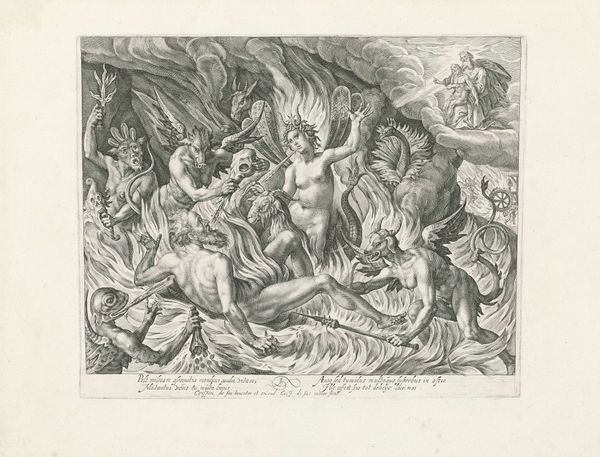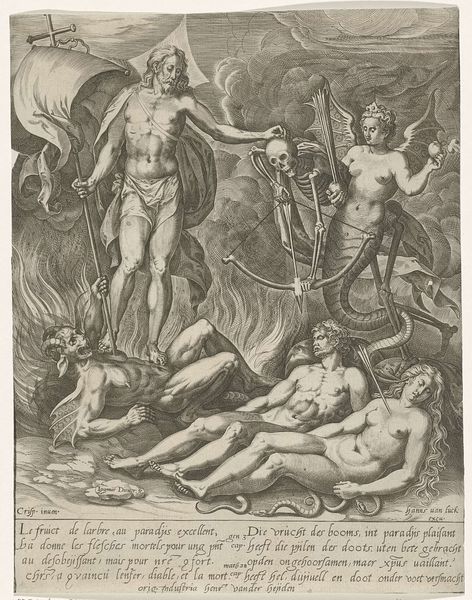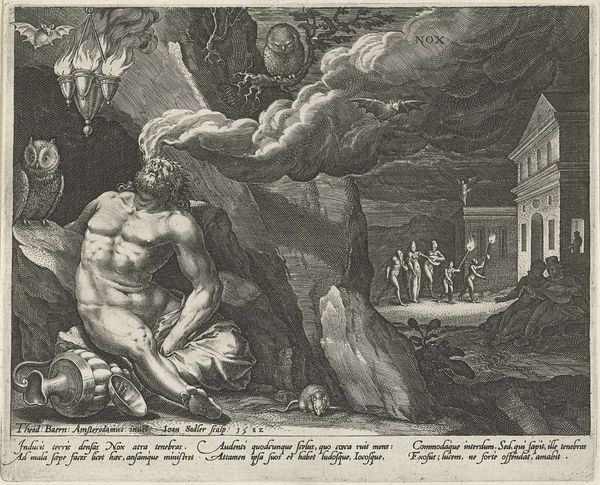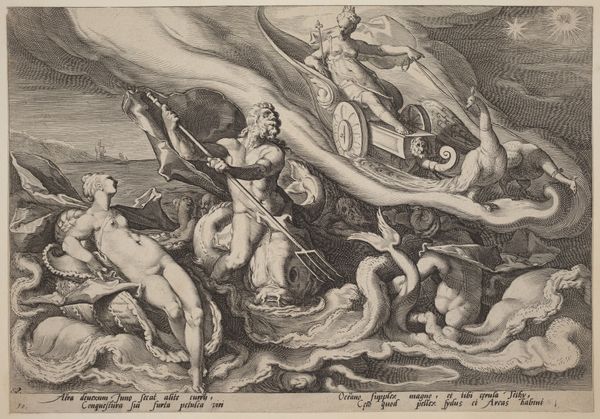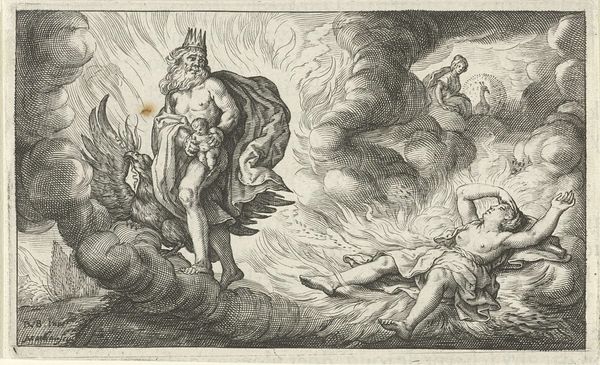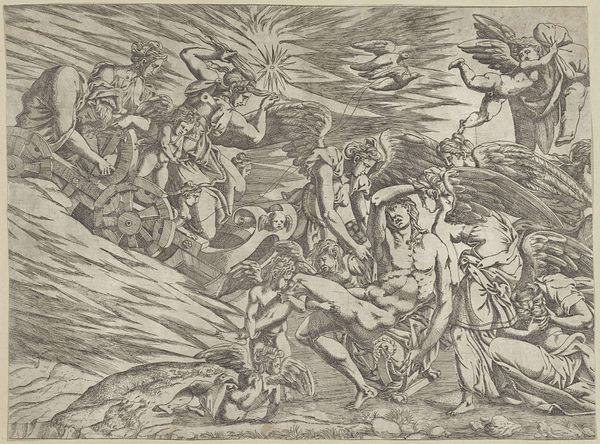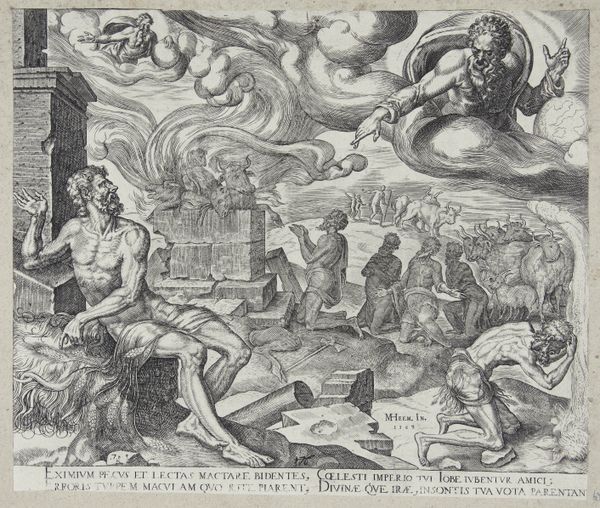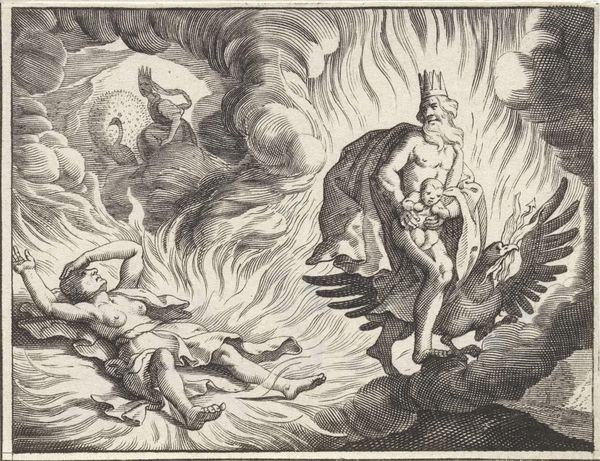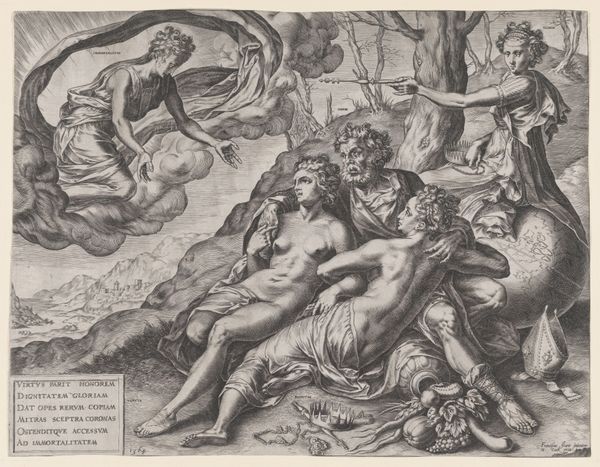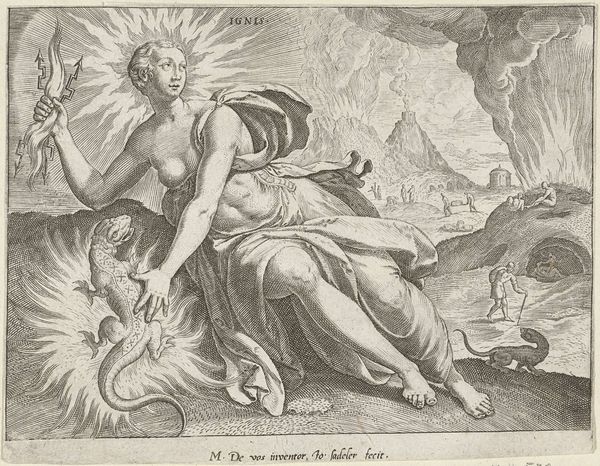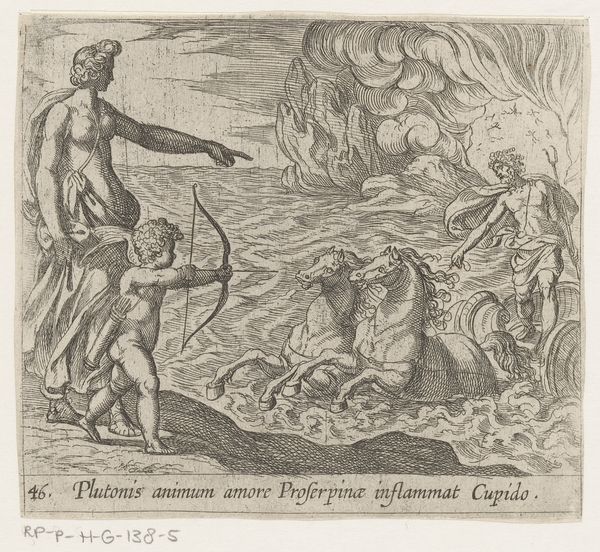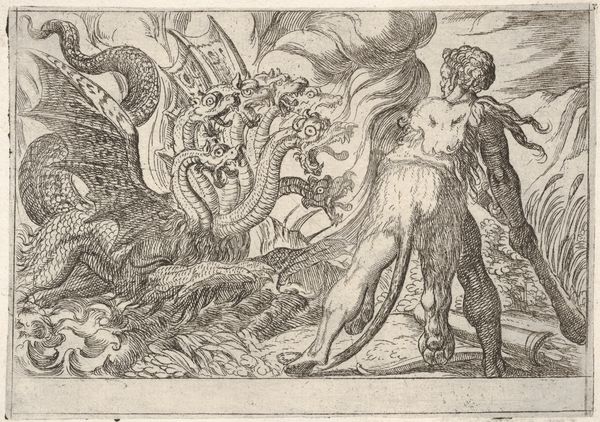
print, engraving
#
allegory
# print
#
mannerism
#
figuration
#
history-painting
#
nude
#
engraving
Dimensions: height 182 mm, width 232 mm
Copyright: Rijks Museum: Open Domain
"Hel als een van de vier uitersten" was made around 1588 by Johann Sadeler I, using engraving techniques. The image is realized through many tiny cuts into a copper plate. The lines are grouped tightly together to suggest the shadows of hell, and more sparsely to show light glinting off the figures' muscles. This was painstaking, skilled work - yet intended as a mass-produced image. Engraving like this was a key technology in the early modern period, enabling the wide circulation of visual ideas. It was the internet of its day. Prints like these helped to consolidate a shared European culture, and a common understanding of good and evil. And it's important to remember the economy of it all: printmaking was a business, and artists like Sadeler were entrepreneurs, making images for a growing market. So, next time you see an old print, don't just think about the image itself. Think about the labor that went into it, and the ways it connected people across time and space.
Comments
No comments
Be the first to comment and join the conversation on the ultimate creative platform.
